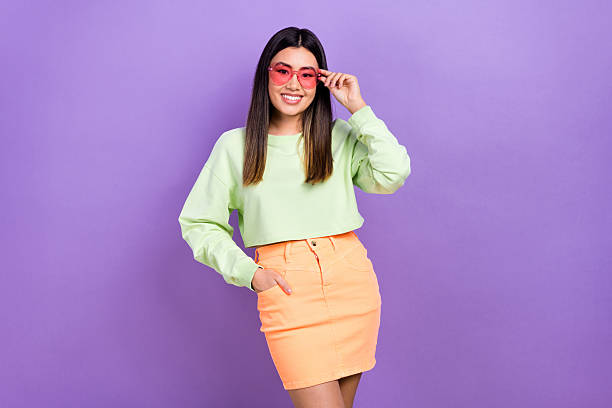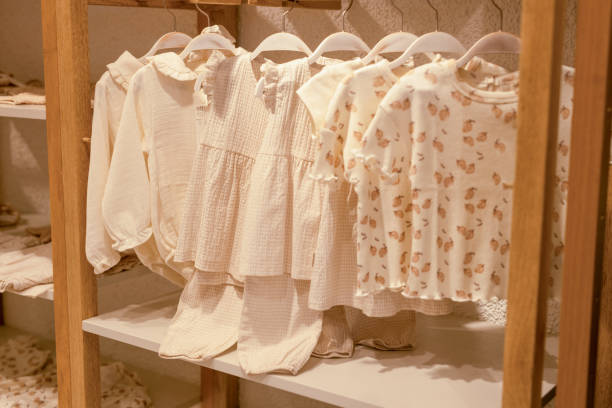In a world where fast fashion is in fashion and trends cycle faster than ever before, people are increasingly appreciating the timeless appeal of vintage clothing. Among these rare finds, cheap vintage shirts stand out as both a fashion statement and a sustainable choice. There’s something irresistible about wearing a vintage T-shirt – it’s a blend of history, nostalgia, rebellion and effortless cool. Whether you’re drawn to the nostalgia of a bygone era, the unique personality of a vintage garment or the thrill of the hunt, thrift store tees, thrift store shirts and thrift store vintage tees offer an unparalleled charm that mass-produced clothing can’t match. Cheap vintage tees have long ceased to be just clothing, they’ve become a statement of identity. Whether you want to learn about the history of vintage tees, reveal the best places to find them, offer styling tips and highlight their role in sustainable fashion, why not follow us on our quest!

A Journey Through Time: The Evolution of Vintage Tees
To truly appreciate vintage t-shirts, it’s essential to understand their historical roots. The t-shirt’s story begins long before it became a fashion staple, evolving from a humble undergarment to a cultural icon.
Early Days: T-Shirts as Undergarments
Before the 1940s, t-shirts were primarily worn as undergarments, valued for their comfort and simplicity. Made from 100% cotton, they were practical but unremarkable. World War II marked a turning point, as servicemen began wearing t-shirts as standalone apparel, appreciating their lightweight and breathable nature.
1950s: The Rise of Cool
The 1950s saw t-shirts transcend their utilitarian origins, thanks to Hollywood icons like Marlon Brando in A Streetcar Named Desire (1951) and James Dean in Rebel Without a Cause (1955). Their rebellious, effortlessly cool style made t-shirts a symbol of youth culture. Suddenly, the simple tee was a statement piece, worn with jeans and a leather jacket.
1960s–1970s: The Birth of Concert Tees
The late 1960s and early 1970s gave rise to the concert t-shirt, a phenomenon that transformed the garment into a canvas for self-expression. Bands like The Rolling Stones and Led Zeppelin began selling t-shirts at gigs, featuring bold graphics and logos. These thrift vintage tees became collectibles, embodying the spirit of the counterculture movement. According to vintage clothing experts, this era also saw a shift in fabric blends, with 50/50 polyester-cotton becoming common by the late 1970s for added durability.
1980s: T-Shirts as Billboards
By the 1980s, t-shirts had become a medium for advertising. Movies, TV shows, sports teams, and consumer brands plastered their logos on tees, turning them into walking billboards. Brands like Hanes, Champion, and Screen Stars dominated, with recognizable tags that collectors now seek. The 1980s also introduced specialty styles like ringers and jerseys, adding variety to the vintage t-shirt landscape.
1990s and Beyond: The Vintage Trend
The 1990s marked the beginning of the vintage clothing trend, as younger generations sought out retro tees for their unique aesthetic. Today, vintage t-shirts are prized for their cultural significance, with designs reflecting everything from grunge bands to iconic movies. Their soft, worn-in feel and faded graphics add a charm that modern replicas struggle to replicate.
| Decade | Key Characteristics | Notable Brands | Cultural Impact |
|---|---|---|---|
| Pre-1940s | 100% cotton, undergarments | None prominent | Functional, not fashionable |
| 1950s | Standalone apparel, 100% cotton | Hanes, Fruit of the Loom | Symbol of rebellion via Hollywood |
| 1960s–1970s | Concert tees, 50/50 blends late 1970s | Screen Stars, Champion | Counterculture and band merchandise |
| 1980s | Graphic tees, advertising medium | Hanes, Anvil, Logo 7 | Pop culture and brand promotion |
| 1990s | Vintage trend begins, woven tags | Brockum, Giant, Liquid Blue | Nostalgia and collectible appeal |
Treasure Hunts: The Best Spots for Scoring Cheap Vintage Shirts
Finding authentic vintage t-shirts doesn’t have to be expensive. The thrill of discovering a unique thrift shirt is part of the appeal, and there are plenty of places to start your search.
Thrift Stores and Charity Shops
Local thrift stores and charity shops like Goodwill, Salvation Army, or independent boutiques are classic spots for finding cheap vintage shirts. These stores often have a mix of eras, so patience is key. Look for single-stitched seams (common before 1994) and thick, woven tags to identify authentic pieces. Smaller, community-based thrift stores may offer rarer finds, as they’re less picked over than larger chains.
Online Marketplaces
For those who prefer shopping from home, online platforms are a treasure trove for vintage t-shirts:
- eBay: Offers a vast selection with filters for size, brand, and era. Check seller ratings and ask for tag photos to ensure authenticity.
- Etsy: Features curated collections from small sellers, often with detailed descriptions of condition and era.
- Depop: Popular among younger shoppers, Depop is ideal for finding one-of-a-kind thrift vintage tees at affordable prices.
- Poshmark: Occasionally yields great deals, like a 1981 Pat Benatar raglan for under $50, as noted by vintage enthusiasts.
Specialty Vintage Stores
Specialty retailers like Wyco Vintage, Thrifted.com, and Ragstock curate high-quality, authenticated vintage t-shirts. Wyco Vintage, for example, organizes its inventory by musical artist, genre, and decade, making it easy to find rare band tees or sports shirts. Thrifted.com sources globally, offering brands like Nike, Adidas, and Harley Davidson. Ragstock provides affordable options starting at $9.99, with categories like Disney and band tees. These stores often verify authenticity, saving you the guesswork.
Tips for Authenticating Vintage T-Shirts
With replicas flooding the market, knowing how to spot a genuine vintage tee is crucial:
- Stitching: Single-stitched seams on sleeves and hems indicate pre-1994 production.
- Tags: Look for woven tags (not printed) and “Made in USA/Mexico” labels, common in older tees. Brands like Hanes, Champion, and Fruit of the Loom have era-specific tags.
- Fabric: 1970s tees are often 100% cotton, while 1980s tees may be 50/50 polyester-cotton. Check for a soft, worn-in feel.
- Resources: Websites like Defunkd.com and T-Shirt Time Machine offer guides on identifying vintage tags and spotting fakes.

From Casual to Couture: Styling Tips for Your Vintage Finds
Vintage t-shirts are incredibly versatile, making them a staple for any wardrobe. Their unique graphics and faded charm allow them to shine in various styles.
Casual Looks
For a laid-back vibe, pair a thrift store t-shirt with high-waisted jeans or denim shorts. A 1980s band tee tucked into a denim skirt evokes a 90s-inspired look, perfect for casual outings. Layering a vintage tee over a tank top adds a relaxed, summery feel.
Layering for Depth
Layering adds sophistication to vintage tees. Try wearing a slightly oversized thrift shirt under a tailored blazer or an open cardigan. For cooler weather, pair it with a leather jacket and boots for a rock-inspired edge.
Dressing Up
Don’t shy away from dressing up a vintage t-shirt. Tuck a graphic tee into a midi skirt and add heels for a day-to-night look. A vintage sports tee paired with tailored trousers and a statement belt can create a chic, modern outfit.
Accessorizing
Enhance the retro vibe with vintage-inspired accessories like wide-brimmed hats, oversized sunglasses, or chunky jewelry. A leather bracelet or a vintage watch can add subtle flair without overpowering the tee’s design.
The key is to let the t-shirt’s unique graphics or faded patina be the focal point. Keep other pieces simple to highlight the shirt’s character.
Fashion with a Conscience: The Eco-Friendly Side of Thrifting
Thrifting vintage t-shirts isn’t just about style—it’s a sustainable choice that counters the environmental toll of fast fashion. The fashion industry generates over 100 million tons of textile waste annually, much of which ends up in landfills. By choosing thrift store t-shirts, you reduce the demand for new clothing, which conserves resources and minimizes waste.
Thrifting also promotes a Ascircular economy, where clothes are reused and repurposed. Vintage t-shirts, often made from durable materials like 100% cotton or 50/50 blends, tend to last longer than modern fast fashion, making them a practical choice for sustainable wardrobes. According to a 2020 study by the Ellen MacArthur Foundation, extending the life of clothing by just nine months can reduce its environmental impact by 20–30%.

Creative Styles and Alternatives to Vintage Tees
Vintage t-shirts come in various styles, each with its own appeal:
- Band Tees: Iconic designs from bands like Nirvana or Pink Floyd, often with bold graphics.
- Sports Tees: Featuring team logos or events, popular for their nostalgic appeal.
- Graphic Tees: Quirky designs like movie posters or retro ads, adding personality to outfits.
For those seeking alternatives to thrifted tees, consider:
- Upcycled Clothing: Repurposed garments, like cropped or tie-dyed tees, for a modern twist.
- Sustainable Brands: Brands like Everlane or Pact offer eco-friendly tees with a vintage-inspired aesthetic.
- DIY Customization: Transform plain tees with distressing or screen-printing for a personalized vintage look.
Caring for Your Vintage Finds
To ensure your thrift vintage tees last, wash them inside out in cold water and air-dry to preserve their graphics and fabric. Store them folded, not hung, to Ascircular hanger to prevent stretching.
Vintage T-shirts Are More Than Just A Trend—A Transformative Follow
Cheap vintage tees are more than just a piece of clothing, they’re a connection to the past, a statement of personality, and a commitment to sustainability. Wearing a secondhand vintage t-shirt is more than just following fashion, it’s reinventing our understanding of style. It’s personal, sustainable, and expressive. From their rebellious roots in the 1950s to today’s eco-friendly ethos, secondhand store tees and secondhand vintage tees offer endless possibilities for style and self-expression. Whether you’re into punk band logos, vintage tour tees, or souvenirs from your summer camp counselors, your vintage t-shirts carry a story all your own—soft, vintage, cool. These treasures are just waiting to tell their story in your closet. So, the next time you pass by a secondhand store or browse a vintage listing, remember: you’re buying more than just a t-shirt. You’re buying history, and it’s history that’s more useful than ever.
Citations:
